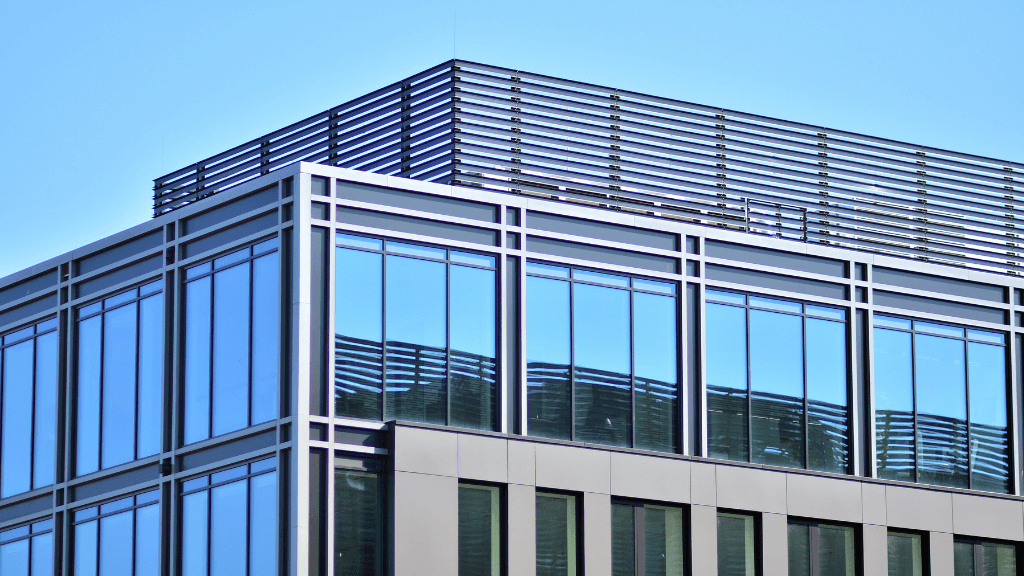Introduction:
Aluminum cladding is becoming increasingly popular in architectural design due to its versatility, durability and aesthetic appeal. From commercial buildings to residential homes, aluminum cladding offers a wide range of benefits, including weather resistance, energy efficiency and design flexibility. In this blog post, we delve into the world of aluminum cladding, exploring its benefits, applications and considerations for incorporating it into your next construction project.
Understanding Aluminum Cladding:

Aluminum cladding consists of thin aluminum sheets that are bonded to a substrate, usually using adhesive or mechanical fastening methods. These boards are available in a variety of thicknesses, finishes and colors, allowing for adaptation to different design requirements. Contractors can install aluminum cladding as a single-skin system, where they directly attach the aluminum sheets to the building structure, or as part of a composite panel system, where they bond the aluminum sheets to a core material such as polyethylene or mineral-filled thermoplastic.
Advantages of aluminum cladding:

Weather resistance: The aluminum casing is highly resistant to corrosion, UV radiation and extreme weather conditions, making it ideal for use in both indoor and outdoor applications. Its durability ensures that it will stand the test of time and maintain its appearance even in harsh environments.
1. Energy efficiency: Aluminum cladding can improve a building’s thermal performance by providing an extra layer of insulation and reducing heat transfer. This helps regulate indoor temperatures, reduce energy use for heating and cooling, and reduce energy costs over time.
2. Design flexibility: Aluminum cladding offers virtually unlimited design possibilities thanks to its versatility in terms of colour, finish and texture. You can customize aluminum cladding to match your design vision and complement the overall style of the building, whether you prefer a sleek, modern aesthetic or a more traditional look.
3. Lightweight and durable: Despite its lightweight nature, the aluminum casing is incredibly durable and robust, making it suitable for use in high-traffic areas and exposed locations. Its strength-to-weight ratio facilitates handling and installation, reducing labor costs and construction time.
4. Low maintenance: Aluminum cladding requires minimal maintenance to keep it looking its best. Regular cleaning with a mild detergent and water is usually sufficient to remove dirt, dust and other impurities. In addition, protective coatings applied to aluminum cladding help prevent staining, fading and corrosion, further reducing the need for maintenance.
Applications of aluminum cladding:
1. Exterior facades: One of the most common applications of aluminum cladding is the construction of exterior facades of buildings. Aluminum cladding can create distinctive architectural features such as accent panels, column caps, and entrance canopies, adding visual interest and enhancing the building’s overall aesthetic appeal.
2. Roofing systems: Aluminum cladding is also used in roofing systems to provide protection from the elements and improve energy efficiency. Aluminum roofing panels are lightweight, easy to install and corrosion resistant, making them an ideal choice for both residential and commercial roofing applications.
3. Interior wall cladding: In addition to exterior applications, aluminum cladding can also be used for interior wall cladding to create modern, durable and easy-to-maintain surfaces. Aluminum panels can be installed in lobbies, hallways and other high traffic areas to add a touch of sophistication and elegance to interior spaces.
4. Signage and Branding: Aluminum cladding is commonly used in signage and branding applications due to its ability to accommodate logos, graphics and other branding elements. Whether used for outdoor signage, navigation systems or indoor branding displays, aluminum cladding offers a durable and visually appealing solution for communicating messages and reinforcing brand identity.
Considerations for using aluminum cladding:
While aluminum cladding offers numerous benefits, there are several factors to consider when incorporating it into your building project:
1. Price: The price of aluminum cladding can vary depending on factors such as material thickness, finish and method of installation. When evaluating the overall economics of aluminum cladding, it is essential to consider the initial cost as well as the long-term energy and maintenance savings.
2. Installation: Proper installation is critical to the performance and longevity of aluminum cladding. It is essential to work with experienced professionals who have the necessary expertise and equipment to ensure the correct and safe installation of cladding.
3. Local Building Codes: Before installing aluminum cladding, it is essential to check local building codes and regulations to ensure compliance with safety, fire resistance and structural requirements. Some jurisdictions may have specific requirements for the use of aluminum cladding in various construction applications.
4. Maintenance: While aluminum cladding is relatively low maintenance, it is essential to implement a regular cleaning and inspection schedule to keep it looking its best and avoid potential problems. Routine maintenance can help extend the life of the cladding and maintain its performance over time.
Read more on Exploring the versatility of movable glass partitions in modern design
Conclusion:
Aluminum cladding offers a wide range of benefits, from weather resistance and energy efficiency to design flexibility and durability. Aluminum cladding provides a versatile and visually appealing solution to improve the aesthetics and functionality of buildings, whether used for exterior facades, roofing systems, interior wall cladding or signage and branding. By understanding the benefits, applications and considerations for aluminum cladding, architects, designers and building owners can make informed decisions and create stunning, sustainable and durable architectural designs.



